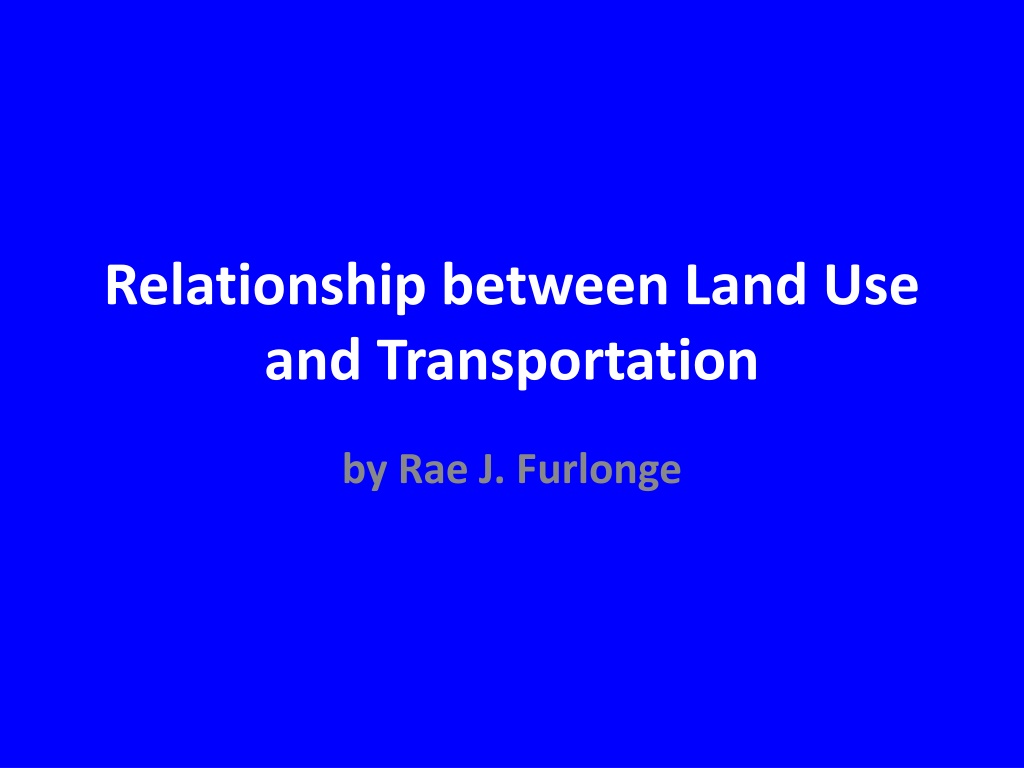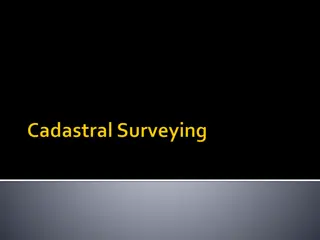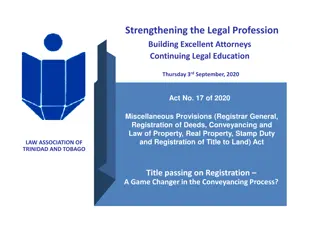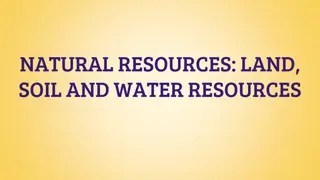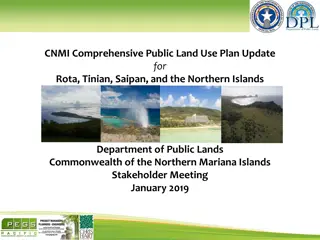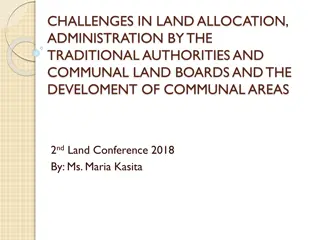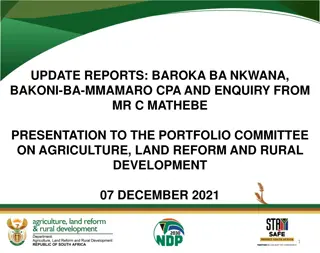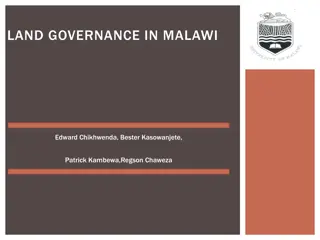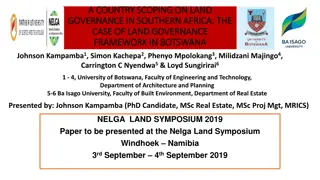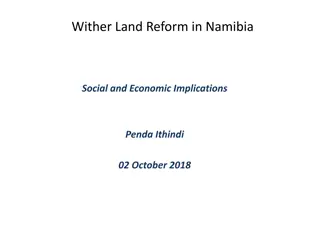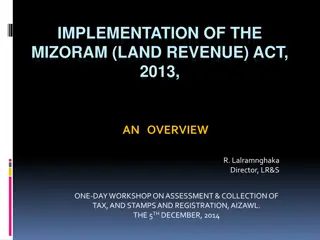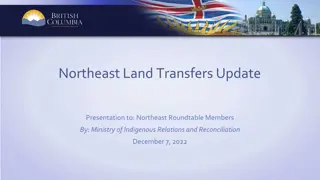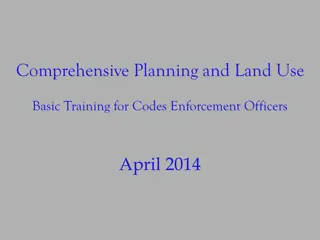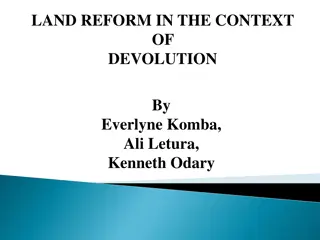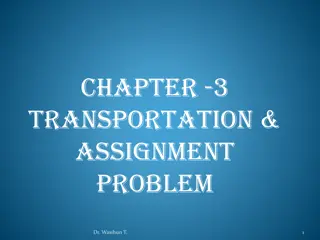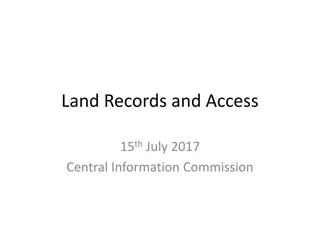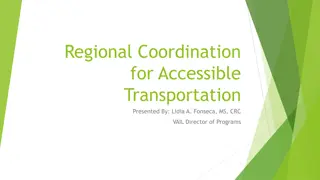Understanding the Relationship Between Land Use and Transportation
The need for land use planning is crucial as land is a finite resource, and its utilization impacts the community. Sustainable transportation aims to increase mobility options while reducing driving. The state plays a vital role in land use activities such as planning, zoning, and infrastructure development. Mobility and accessibility are key factors in determining transportation policies and connectivity between land use activities. The degree of connectivity is calculated based on the attraction and cost of travel between geographical zones for specific activities.
Download Presentation

Please find below an Image/Link to download the presentation.
The content on the website is provided AS IS for your information and personal use only. It may not be sold, licensed, or shared on other websites without obtaining consent from the author. Download presentation by click this link. If you encounter any issues during the download, it is possible that the publisher has removed the file from their server.
E N D
Presentation Transcript
Relationship between Land Use and Transportation by Rae J. Furlonge
Need for Land Use Planning Land being a finite commodity it is now generally understood that its use cannot be left to a state of laissez-faire. Land that is good for use by an individual or an organization or an institution may not necessarily be the use which is in the best interest of the community and its constituent members as a whole.
Sustainable Transportation Sustainable transportation is about moving more easily and driving less. It means providing more mobility options to more people. It means providing greater connectivity between the places need to get to.
State Role in Land Use Activities Responsible for land use planning and zoning (T&CPD) Responsible for land use development control (T&CPD) through (a) development impact assurance of sufficient infrastructure, and (b) environmental impact Access management (Highways Division) ranges from Unlimited access (following guidelines) to Limiting road capacity expansion to designated areas
Mobility Mobility refers to how frequently you travel It is commonly measured as the product of the number of persons or vehicles and their distances travelled.
Accessibility Accessibility refers to how easily you travel between land use activities, or the overall difficulty in getting from an origin to a destination. It is a measure of the degree of connectivity of a particular location to/from other locations While both terms are important, the latter estimates land-use transportation connectivity and so is a more important measure in determining transportation policy.
Degree of Connectivity Mathematically, accessibility of a geographical zone i for a specific activity is the summation of the product of the attraction of zone j and the deterrence expression due to the cost of travel between zones i and j. Attraction in zone j is typically the measure of activity in zone j, such as the number of jobs, or people, etc. Cost of travel is usually the travel time between zones i and j.
Accessibility Models Ai = j (Wj)exp(- cij) where Ai is the origin accessibility index of zone i or the accessibility of zone i to all other zones Bj= i(Wi)exp(- cij) where Bjis the destination accessibility index of zone j or the accessibility of zone j from all other zones
Zones and Centroids A zoning system is used to aggregate the individual land use activities into manageable chunks for modelling purposes. Zones should be as homogeneous as possible in their land use and/or population composition The zoning system must be compatible with other administrative divisions, particularly with census zones The greater the number of zones, the smaller they can be to cover the same study area.
Zones and Centroids Zones are represented in modelling as if all their attributes and properties were concentrated in a single point called the zone centroid. This notional spot is best thought of as floating in space and not physically on any location on a map. Centroids are attached to the network through centroid connectors representing the average costs (time, distance) of joining the transport system for trips with origin or destination in that zone.
Other Definitions Policies direct the effort of the transportation sector towards defined objectives, for example to promote economic growth and to improve safety. Strategies organise the way that policies are implemented, and seek to ensure that actions are complementary rather than contradictory. Modelling is any form of computer based-representation of the transport ation system that includes a forecasting and future options testing capability. Models are simplified representations of reality and therefore, only make a partial contribution to the decision making processes associated with policy and strategy development.
Other Definitions Land Use Density: Persons or jobs per unit of land area (acre or hectare). Land Use Mix: Proximity between different land uses (e.g., housing, commercial, institutional) Land Use Centredness (centricity): Portion of jobs and other activities in central business districts (e.g., downtowns)
